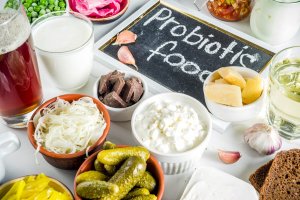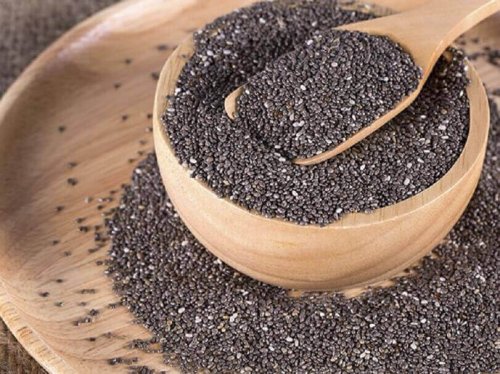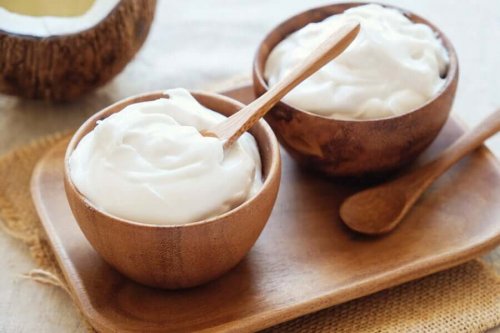What’s the Difference between Prebiotics and Probiotics?


Written and verified by the nutritionist Anna Vilarrasa
Although both are beneficial to health, the difference between prebiotics and probiotics is basically their function and where you can find them.
Millions and millions of microbes live in our cells: the microbiota. A large part of them live in the gut and are known by the name of intestinal flora. All these intestinal bacteria can be divided into two types: those that have beneficial and those that have harmful effects. The latter can cause diarrhea, infections, or intestinal putrefaction. On the other hand, beneficial bacteria help control harmful bacteria, stimulate the immune system, reduce gas, and improve digestion. Also, the human body needs them to synthesize some vitamins and absorb certain nutrients.
Thus, to enjoy a good mood and health, it’s very important to keep your intestinal flora healthy and balanced. What role do prebiotics and probiotics play in all of this?
Below, we’ll explain this in detail.
The main difference between prebiotics and probiotics
You must do two basic things to keep your intestinal flora in good condition:
- Provide it with probiotics to ensure a constant supply of living microbes in your body.
- Also, give it prebiotics to provide good food to the microbes that already live there.
In those very brief lines lies the main difference between prebiotics and probiotics. Next, we’re going to delve a little deeper into each of them and discover their most important sources.
Prebiotics, your intestinal flora’s “food”

Prebiotics are the non-digestible ingredients of foods that reach the colon intact. Once there, they become food for your intestinal bacteria that have suitable enzymes to break them down. As they become food for intestinal bacteria, they stimulate their growth and activity and end up improving the health of the host (people).
For a food component to be considered a prebiotic, it has to meet three conditions:
- It can’t be broken down or absorbed in the stomach and small intestine.
- It must be able to be fermented by the bacteria once it arrives intact in the colon.
- This fermentation must favor the activity and proliferation of certain intestinal bacteria that have a beneficial effect on humans.
As of yet, the most studied prebiotics have been the different types of fibers present in plant-based foods. Specifically, fructooligosaccharides (FOS), galactooligosaccharides (GOS), and inulin.
However, you can find beneficial substances for your intestinal flora in many other foods:
- Some types of fibers present in onions, leeks, asparagus, artichokes, seeds (chia and flax), potatoes, carrots, and apples, among other foods, are good prebiotics.
- In the polyphenols in cocoa, berries, or spices.
- In the fats in olive oil, nuts, or oily fish.
Read on to learn more: The Top 15 Healthiest Probiotics and Prebiotics
What are probiotics?
Now that you know what prebiotics are, let’s delve deeper into the concept of probiotics to fully understand the difference between the two. The term probiotic means “pro-life”. The most widely accepted definition of probiotic was formulated by the World Health Organization (WHO) and the Food and Agriculture Organization of the United Nations (FAO). These organizations state that probiotics are:
“Live microorganisms which, when administered in adequate amounts, provide a health benefit to their host.”
Here, we’re not talking about feeding our bacteria, but providing the bacteria in and of themselves. Most probiotics come from bacteria used in food fermentation. The most studied belong to the genera Lactobacillus and Bifidobacterium.
You can find probiotics in foods or as dietary supplements.
The main probiotic foods

We could say that one of the most affordable probiotic-rich foods is yogurt. You don’t need to add anything to it, as a good plain yogurt contains both lactobacillus and streptococcus. Kefir is also ideal, as it contains different kinds of bacterial strains in bigger quantities.
Another good source of probiotics is fermented vegetables, such as sauerkraut, pickles, or gherkins. From Asian cuisine, we have miso (fermented soybean paste) and tempeh (fermented soybeans). Finally, one of the last to appear on the list of probiotic foods is kombucha, a slightly fizzy drink that has become very popular in recent years.
Find out more here: Kombucha: What is It, How Do You Make It, and What is It For?
Final notes on the difference between prebiotics and probiotics
The best way to sum up the difference between prebiotics and probiotics is to understand that the two have different but complementary actions. Therefore, you won’t help your body if you simply consume probiotics but don’t feed them well with prebiotics. However, stay tuned for the latest developments, as the science around prebiotics and probiotics is growing and may provide many new concepts and findings.
All cited sources were thoroughly reviewed by our team to ensure their quality, reliability, currency, and validity. The bibliography of this article was considered reliable and of academic or scientific accuracy.
- Adhikari, P., & Kim, W. (2017). Overview of Prebiotics and Probiotics: Focus on Performance, Gut Health and Immunity-A Review. Annals of Animal Science, 17(4), 949. https://search.proquest.com/openview/06c7e33e5e02850d66a0a115922006d5/1?pq-origsite=gscholar&cbl=1976406
- Cunningham, M., Azcarate-Peril, M., Barnard, A., Benoit, V., Grimaldi, R., Guyonnet, D., Holscher, H., Hunter, K., Manurung, S., Obis, D., Petrova. M., Steinert, R., Swanson, K., Sinderen, D., Vulevic, J., & Gibson, G. R. (2021). Shaping the future of probiotics and prebiotics. Trends in microbiology, 29(8), 667-685. https://www.cell.com/trends/microbiology/fulltext/S0966-842X(21)00005-6
- Davani-Davari, D., Negahdaripour, M., Karimzadeh, I., Seifan, M., Mohkam, M., Masoumi, S., Berenjian, A. & Ghasemi, Y. (2019). Prebiotics: definition, types, sources, mechanisms, and clinical applications. Foods, 8(3), 92. https://www.ncbi.nlm.nih.gov/pmc/articles/PMC6463098/
- Floch, M. H. (2018). The role of prebiotics and probiotics in gastrointestinal disease. Gastroenterology Clinics, 47(1), 179-191. https://pubmed.ncbi.nlm.nih.gov/29413011/
- Holscher, H. (2017). Dietary fiber and prebiotics and the gastrointestinal microbiota. Gut microbes, 8(2), 172-184. https://pubmed.ncbi.nlm.nih.gov/28165863/
- Homayoni, A., Vaghef, E., Alipoor, B., & Vaghef, L. (2016). The comparison of food and supplement as probiotic delivery vehicles. Critical Reviews in Food Science and Nutrition, 56(6), 896-909. https://www.tandfonline.com/doi/full/10.1080/10408398.2012.733894
- Krumbeck, J., Walter, J., & Hutkins, R. (2018). Synbiotics for improved human health: recent developments, challenges, and opportunities. Annual review of food science and technology, 9, 451-479. https://www.annualreviews.org/doi/abs/10.1146/annurev-food-030117-012757
- Sanders, M., Merenstein, D., Reid, G., Gibson, G., & Rastall, R. (2019). Probiotics and prebiotics in intestinal health and disease: from biology to the clinic. Nature reviews Gastroenterology & hepatology, 16(10), 605-616. https://www.nature.com/articles/s41575-019-0173-3
- Wilkins, T., & Sequoia, J. (2017). Probiotics for gastrointestinal conditions: a summary of the evidence. American family physician, 96(3), 170-178. https://www.aafp.org/pubs/afp/issues/2017/0801/p170.html
- Stavropoulou, E., & Bezirtzoglou, E. (2020). Probiotics in medicine: a long debate. Frontiers in immunology, 11, 2192. https://www.frontiersin.org/journals/immunology/articles/10.3389/fimmu.2020.02192/full
- Zendeboodi, F., Khorshidian, N., Mortazavian, A., & da Cruz, A. (2020). Probiotic: conceptualization from a new approach. Current Opinion in Food Science, 32, 103-123. https://www.sciencedirect.com/science/article/pii/S221479932030028X
This text is provided for informational purposes only and does not replace consultation with a professional. If in doubt, consult your specialist.








